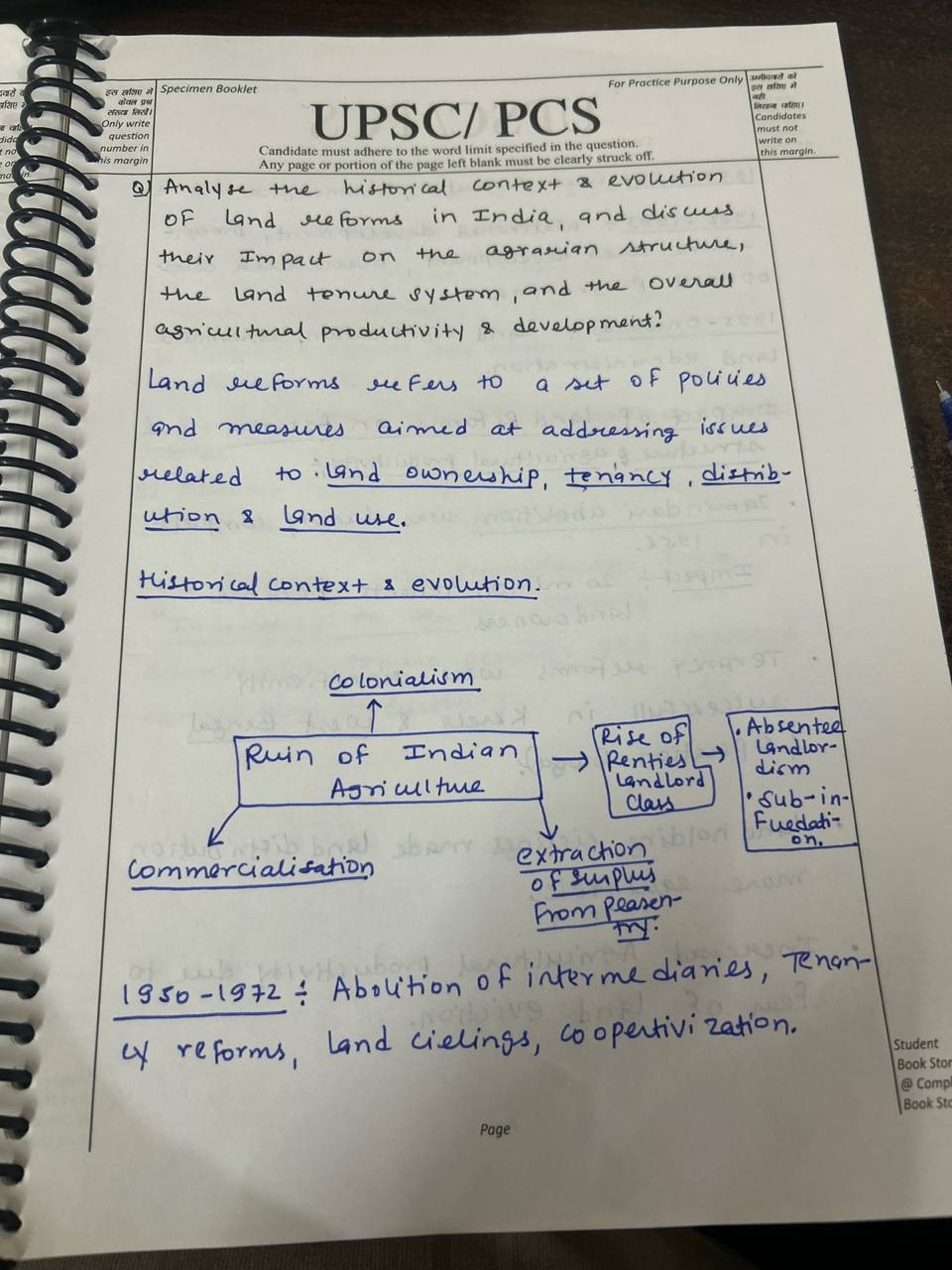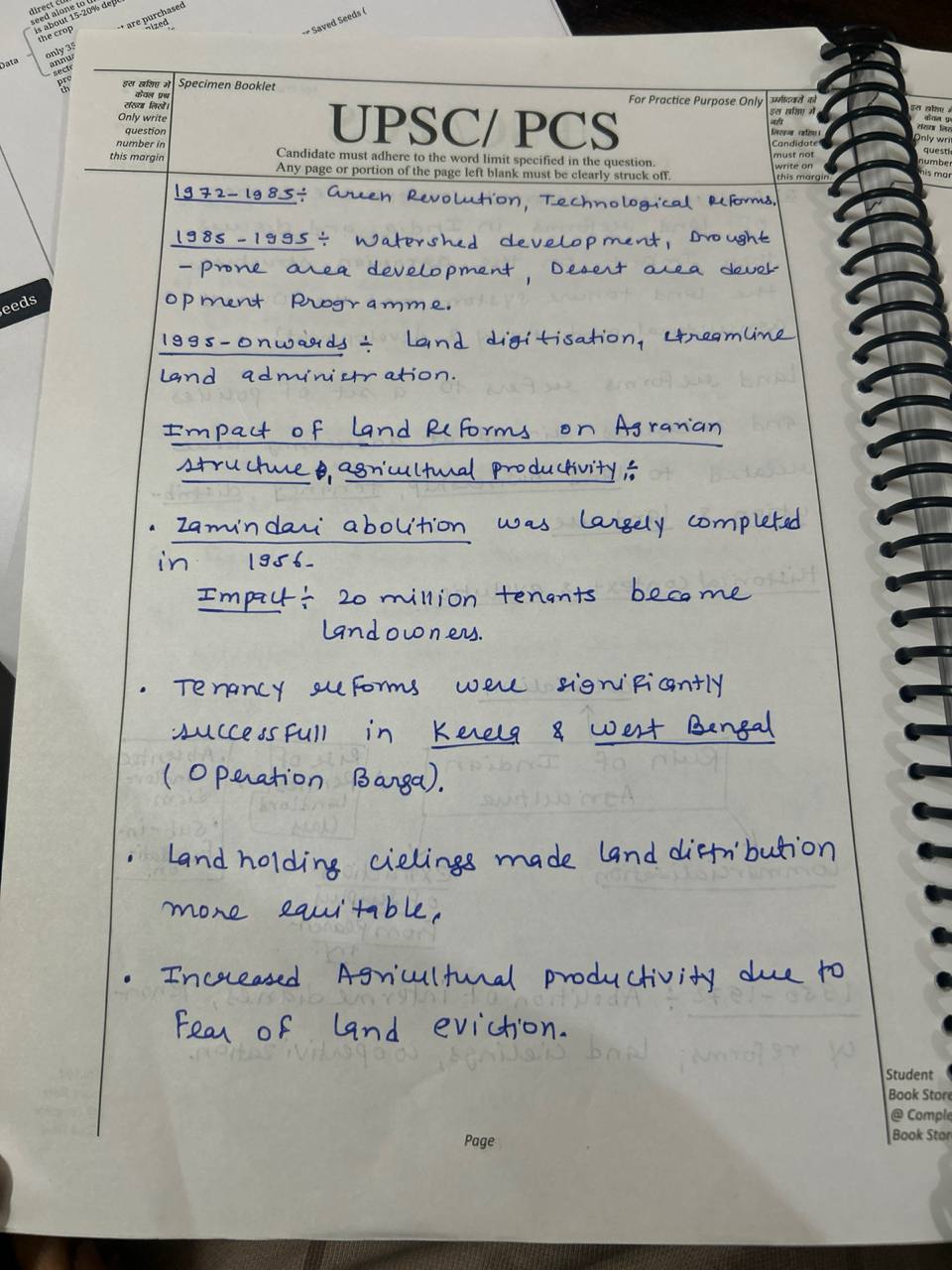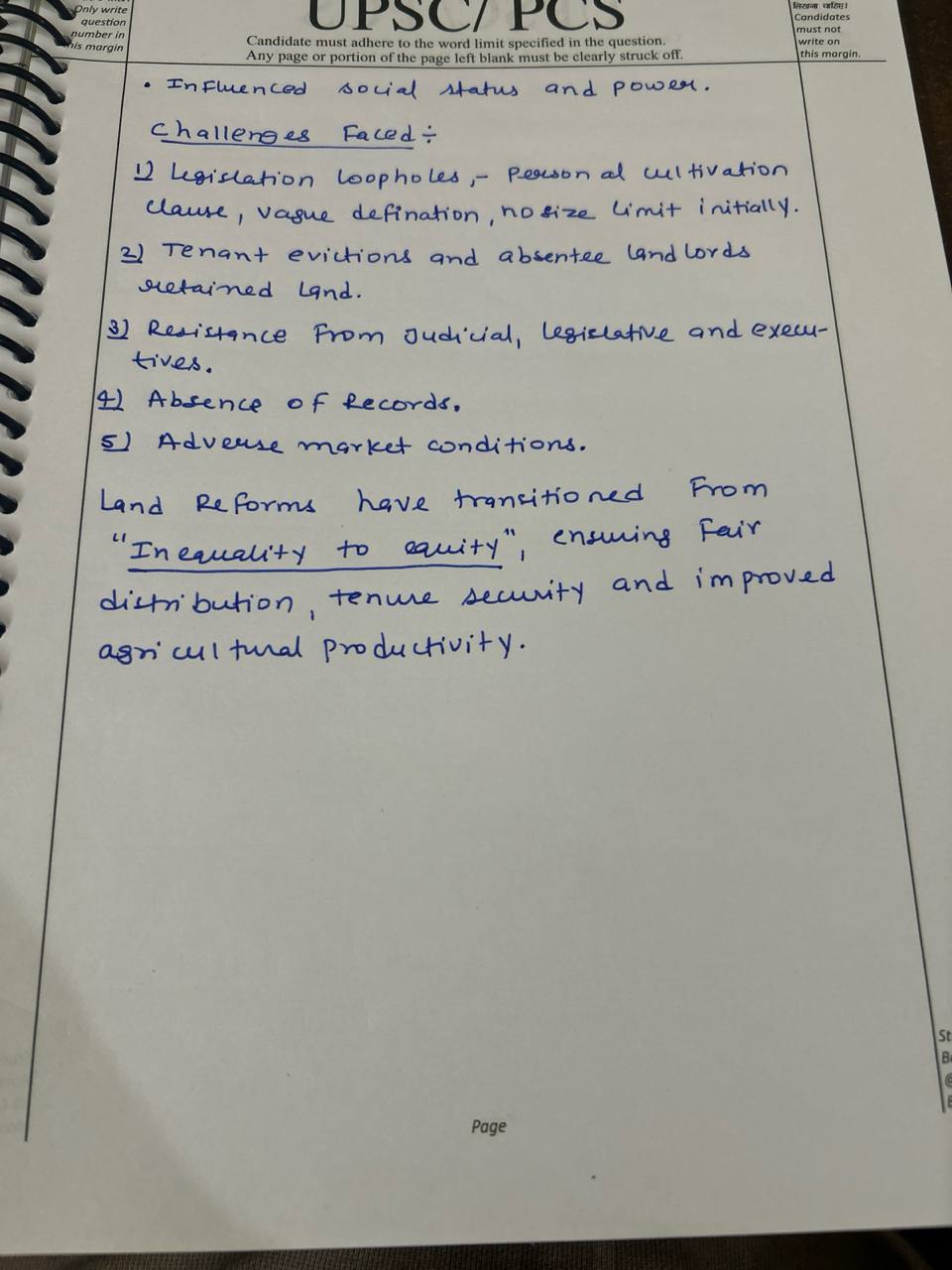Despite significant progress in gender equality, women’s representation in Science, Technology, Engineering, and Mathematics (STEM) fields remains disproportionately low. Develop a strategic plan that includes both short-term and long-term initiatives to overcome these barriers. Outline specific programs, policies, and partnerships ...
Community-based and participatory approaches to land management, such as Joint Forest Management (JFM) and Watershed Development Programs (WDP), hold significant potential in enhancing equitable access, sustainable use, and collective governance of land resources. Here’s an analysis of their potentiRead more
Community-based and participatory approaches to land management, such as Joint Forest Management (JFM) and Watershed Development Programs (WDP), hold significant potential in enhancing equitable access, sustainable use, and collective governance of land resources. Here’s an analysis of their potential and the necessary policy and institutional frameworks for their widespread adoption:
Potential of Community-Based Approaches:
1. Equitable Access:
- Objective: These approaches aim to ensure that marginalized and local communities have fair and inclusive access to land resources.
- Potential: By involving local communities in decision-making processes, these approaches can mitigate historical injustices, empower communities, and provide secure land tenure, especially for vulnerable groups.
2. Sustainable Use:
- Objective: Promote environmentally sustainable practices that preserve natural resources and biodiversity.
- Potential: Community-based approaches often emphasize sustainable land use practices, such as agroforestry, soil conservation measures, and water management techniques. This helps in restoring degraded lands, improving soil fertility, and enhancing overall ecosystem health.
3. Collective Governance:
- Objective: Foster collective management and stewardship of land resources by local communities.
- Potential: Through participatory decision-making and governance structures, communities can effectively manage and monitor land use activities. This reduces conflicts over resources, ensures equitable distribution of benefits, and strengthens social cohesion.
Policy Frameworks Required:
1. Legal Recognition and Support:
- Policy: Ensure legal frameworks recognize and support community rights to land and resources.
- Institutional: Establish clear legal provisions for community-based land management, including land tenure security, rights over natural resources, and participation in decision-making processes.
3. Capacity Building:
- Policy: Invest in capacity building programs for communities, local governments, and civil society organizations involved in land management.
- Institutional: Provide training in sustainable land management practices, conflict resolution, governance structures, and technical skills related to agriculture, forestry, and water management.
4. Financial Support and Incentives:
- Policy: Create financial mechanisms and incentives to support community-based initiatives, such as grants, subsidies, and access to credit for sustainable land management projects.
- Institutional: Establish funds dedicated to community-driven development, encourage partnerships with private sector entities, and facilitate access to markets for sustainable products.
5. Participatory Planning and Monitoring:
- Policy: Promote participatory approaches in land use planning, including the inclusion of community perspectives and traditional knowledge.
- Institutional: Develop mechanisms for monitoring and evaluation that involve communities in assessing the impact of land management practices on livelihoods, ecosystem services, and social well-being.
6. Collaborative Governance Structures:
- Policy: Foster collaboration among government agencies, local authorities, communities, and other stakeholders in decision-making processes.
- Institutional: Establish platforms for dialogue, coordination, and conflict resolution to address competing interests and ensure equitable distribution of benefits from land resources.
Institutional Frameworks Required:
1. Community Organizations and Institutions:
- Support the formation and strengthening of community-based organizations (CBOs), cooperatives, and user groups that can effectively manage land resources.
- Facilitate their capacity to negotiate with external agencies, access technical support, and sustainably utilize resources.
2. Local Government Capacities:
- Build the capacity of local government institutions to support and regulate community-based land management initiatives.
- Ensure they have adequate resources, technical expertise, and legal mandates to collaborate with communities and enforce regulations.
3. Research and Knowledge Sharing:
- Invest in research on community-based land management approaches, document best practices, and disseminate knowledge through training programs, workshops, and peer-to-peer learning platforms.
4. Monitoring and Evaluation Systems:
- Develop robust systems for monitoring the impact of community-based approaches on land productivity, ecosystem health, social equity, and economic development.
- Use data-driven insights to adapt policies, improve institutional support, and scale successful initiatives.
Conclusion:
Community-based and participatory approaches to land management, such as JFM and WDP, offer viable solutions to enhance equitable access, sustainable use, and collective governance of land resources. To enable their widespread adoption, it is crucial to establish supportive policy frameworks that recognize community rights, provide capacity building and financial incentives, promote participatory planning, and foster collaborative governance structures. Effective institutional arrangements are equally essential to empower communities, build local capacities, and ensure the long-term success and sustainability of community-driven land management initiatives. By integrating these elements, governments can leverage the potential of communities in addressing land-related challenges while promoting inclusive and sustainable development.
See less



Short-Term Initiatives (1-3 years) 1. School Level: Awareness Campaigns: Conduct workshops and seminars in schools to highlight the achievements of women in STEM.Collaborate with local non-profits and women’s organizations. Mentorship Programs: Establish mentorship programs pairing young girls withRead more
Short-Term Initiatives (1-3 years)
1. School Level:
2. University Level:
3. Workplace Level:
Long-Term Initiatives (4-10 years)
1. School Level:
2. University Level:
3. Workplace Level:
Monitoring and Evaluation
Partnerships and Collaborations
Conclusion
Implementing this strategic plan requires a concerted effort from all stakeholders, including schools, universities, workplaces, governments, and non-profits. By fostering a supportive and inclusive environment at every level, we can significantly increase women’s representation in STEM fields and pave the way for a more diverse and innovative future.
See less